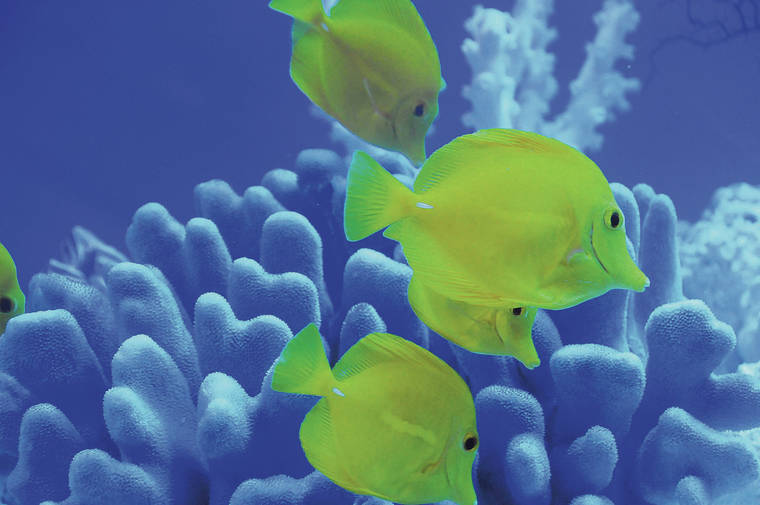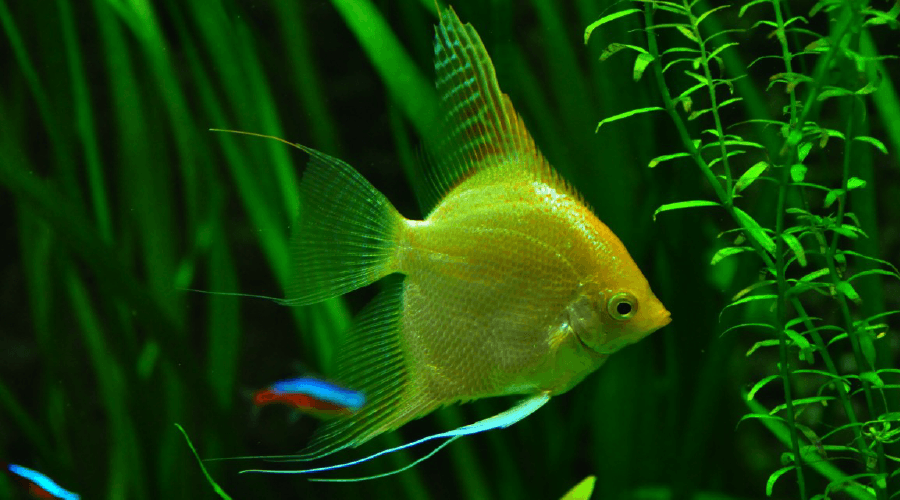
Because both ammonia and nitrite are potentially lethal to fish, take steps immediately to lower them. Biologicals: If the ammonia or nitrite levels are elevated, then the biologicals or natural bacteria in the tank are not stabilized sufficiently to keep toxins in check.If you keep fish that require an alkaline pH, consider changing your aquarium decor to something that will not lower the pH. If driftwood is the cause, the tinted water will clear over time, as the tannins in the driftwood will eventually deplete. This is not a problem unless you are keeping fish that require a significantly higher pH. Tannins: An acidic pH along with driftwood in the tank is a strong indicator that tannins have leached from the driftwood.Try to change out the carbon on a regular basis, at least every 3 to 4 weeks if not sooner. Activated carbon has many uses in an aquarium filter including removing small amounts of DOC, removing water smells and making the water look cleaner or polished. To best way to fix the yellow coloration of your tank water is to perform more frequent partial water changes along with the use of activated carbon. This should subside after the driftwood has been in the aquarium for a couple of months. This often happens in tanks that have new driftwood and it is because of the tannins in the wood being released into the water. Fish waste, driftwood, decaying plant matter and other dissolved organic carbons (DOC). Yellow aquarium water can be the result of several factors. This is just a quick fix and we recommend that you figure out what's causing the algae problem in the first place. The algae destroyer should clear up the algae problem quickly. If that doesn't work, as a last resort, you could use Aquarium Pharmaceuticals Algae Destroyer. While we agree that these sterilizers can have a positive effect on the algae growth in your tank, there are better, less expensive methods to use for controlling algae in the aquarium and we recommend you try some of the ideas presented above. Pond keepers sometimes use a UV Sterilizer on their outdoor ponds to help control algae growths. Also look into keeping live aquarium plants which will compete with the algae for available nutrients. You may be introducing nitrates and possibly phosphates into your tank via the water changes and not even know it. If you do practice good aquarium maintenance and still have algae problems, look into testing your tap water. To correct this problem, perform 25 percent water changes daily, rinse out or replace the filter media to reduce the amount of nitrates, feed your fish a little less and leave your tank light off for a few days or until the water clears up. Direct sunlight will add fuel to the fire so to speak and direct sunlight will cause temperature fluctations as well. Avoid placing your aquarium where it could receive direct sunlight. If you have a saltwater aquarium consider using a protein skimmer and biopellets. The main problems are usually high nitrates and phosphate levels.


Your tank water is nutrient rich, which may mean that you're feeding too much, your tank may be overstocked or you're not doing enough water changes or a combination of all the above. This happens because of the amount of nutrients and the amount of light entering the aquarium. The green cloudy water will not harm your fish but it is not the most pleasant thing to look at.

#AQUARIUM WATER YELLOW TINGE HOW TO#
Read up on how to control aquarium algae. You can help keep your tropical fish from getting stressed by performing 25% water changes daily and feeding them less until the nitrogen cycle has finished. See the Nitrogen Cycle for more information on this process. This cloudy situation will correct itself when a sufficient amount of bacteria establishes on your biological filter. If your tank has been set up for a short time this may be the result of a bacterial bloom that happens in a newly set up tank or when too many fish were added too soon. This can be difficult to do with sand but the dust particles should settle in a day or two. Be sure to thoroughly rinse your substrate before adding it to your aquarium. If you have a white cloudy fish or gray cloudy water in your fish tank and you have just set it up, it could be the dust from the gravel or sand. Read on to find out how to deal with each of these water quality issues. Yellow cloudy water is usually a result of high levels of dissolved organics or using new drift wood.Green cloudy water is usually an algae bloom.White cloudy water is usually indicative of a bacterial bloom.

Do you have cloudy aquarium water in your fish tank? Here are the most common types of cloudiness:


 0 kommentar(er)
0 kommentar(er)
